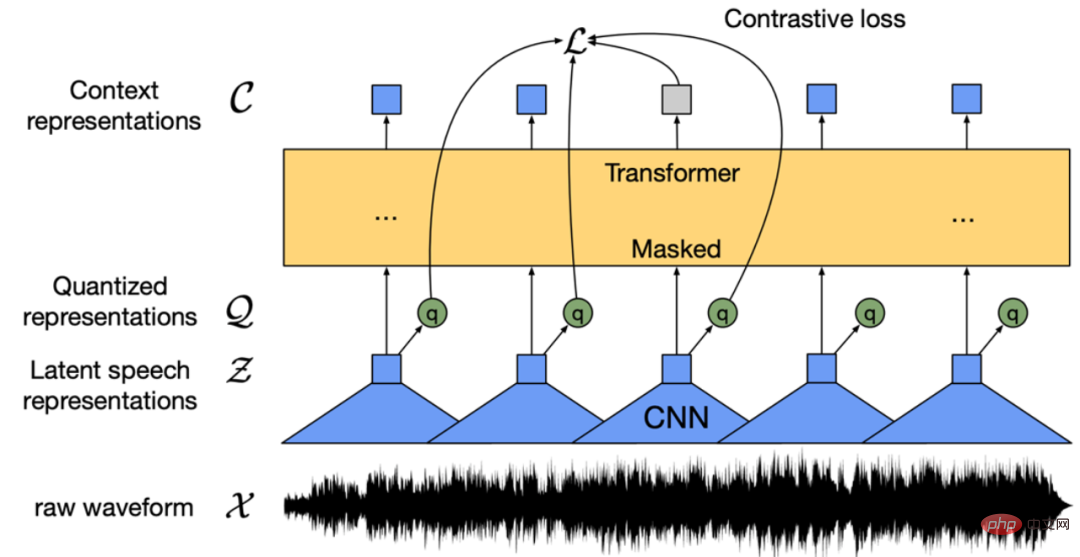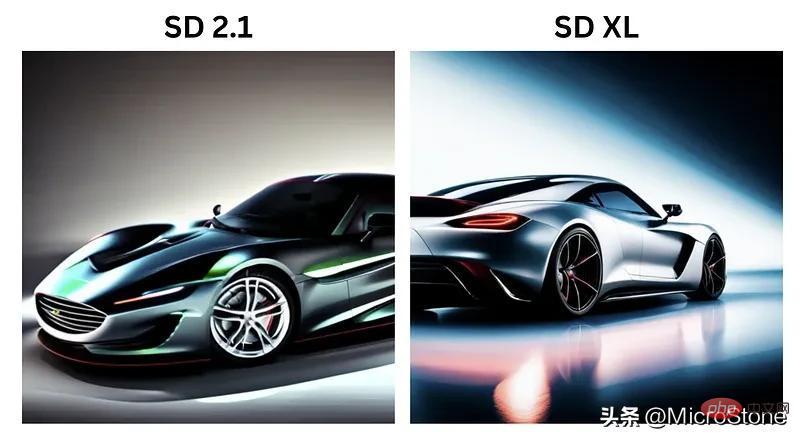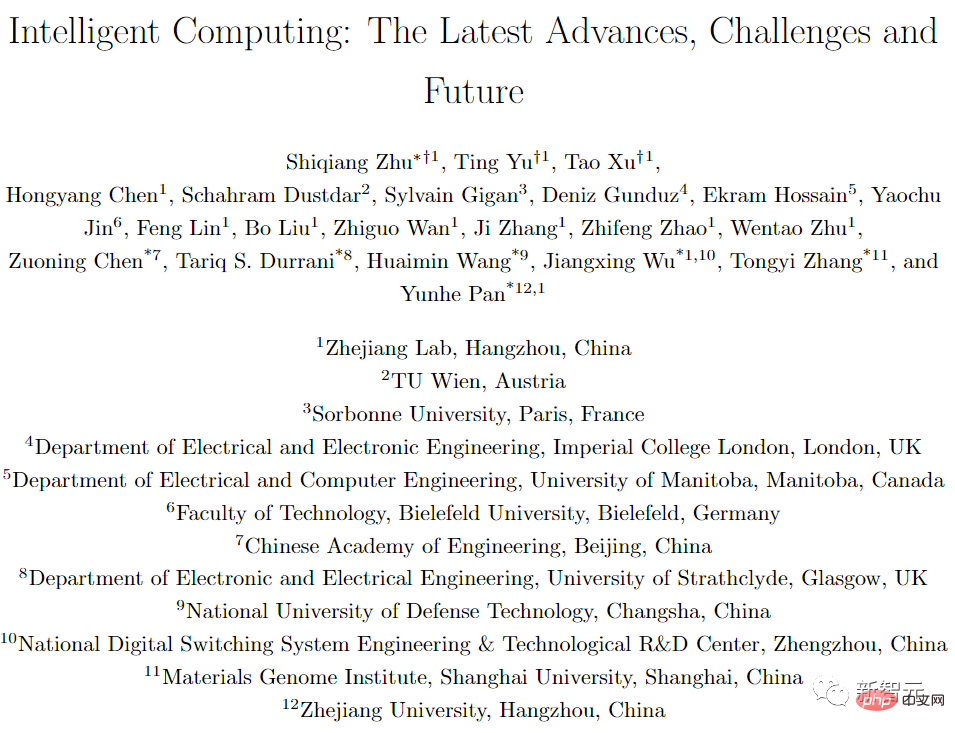 Technology peripherals
Technology peripherals AI
AI The NPC with high emotional intelligence is here. As soon as it reaches out its hand, it is ready to cooperate with the next move.
The NPC with high emotional intelligence is here. As soon as it reaches out its hand, it is ready to cooperate with the next move.In the fields of virtual reality, augmented reality, games and human-computer interaction, it is often necessary to allow virtual characters to interact with players outside the screen. This interaction is real-time, requiring the virtual character to dynamically adjust according to the operator's movements. Some interactions also involve objects, such as moving a chair with an avatar, which requires special attention to the precise movements of the operator's hands. The emergence of intelligent and interactive virtual characters will greatly enhance the social experience between human players and virtual characters and bring a new way of entertainment.
In this study, the author focuses on the interaction tasks between humans and virtual humans, especially the interaction tasks involving objects, and proposes a new task called online whole-body action response synthesis . The new task will generate virtual human reactions based on human movements. Previous research mainly focused on human-to-human interaction, without considering the objects in the task, and the generated body reactions did not include hand movements. In addition, previous work did not treat tasks as online reasoning. In actual situations, virtual humans predict the next step based on the implementation situation.
To support the new task, the authors first constructed two datasets, named HHI and CoChair respectively, and proposed a unified method. Specifically, the authors first construct a social affordance representation. To do this, they select a social affordance vector, learn a local coordinate system for the vector using an SE (3) equivariant neural network, and finally normalize its social affordances. In addition, the author also proposes a scheme for social affordance prediction to enable virtual humans to make decisions based on predictions.
Research results show that this method can effectively generate high-quality reaction actions on the HHI and CoChair data sets, and can achieve a real-time inference speed of 25 frames per second on an A100. In addition, the authors also demonstrate the effectiveness of the method through verification on existing human interaction datasets Interhuman and Chi3D.


##Please refer to the following paper address for more detailed information :[https://arxiv.org/pdf/2312.08983.pdf]. Hope this helps players who are still looking for a way to solve the puzzle.
Please visit the project homepage https://yunzeliu.github.io/iHuman/ for more information on puzzle-solving methods.
Dataset construction
In this article, the author constructed two datasets to support the online whole-body action response synthesis task. One of them is the data set HHI of two-person interaction, and the other is the data set CoChair of two-person interaction with objects. These two datasets provide researchers with valuable resources to further explore the field of full-body motion synthesis. The HHI dataset records various interactions between two people, while the CoChair dataset records interactions between two people and objects. The establishment of these data sets provides researchers with more experiments

The HHI data set is a large-scale whole body action response data set. Contains 30 interaction categories, 10 pairs of human skeleton types and a total of 5000 interaction sequences.
The HHI data set has three characteristics. The first feature is the inclusion of multi-person full-body interaction, including body and hand interaction. The author believes that in multi-person interactions, the interaction of hands cannot be ignored. During handshakes, hugs and handovers, rich information is transmitted through hands. The second feature is that the HHI data set can distinguish clear behavioral initiators and responders. For example, in situations such as shaking hands, pointing in the direction, greetings, handovers, etc., the HHI dataset can identify the initiator of the action, which helps researchers better define and evaluate the problem. The third feature is that the HHI data set contains more diverse types of interactions and reactions, not only including 30 types of interactions between two people, but also providing multiple reasonable reactions to the same actor. For example, when someone greets you, you can respond with a nod, with one hand, or with both hands. This is also a natural feature, but it has rarely been paid attention to and discussed in previous datasets.
CoChair is a large-scale multi-person and object interaction dataset, which includes 8 different chairs, 5 interaction modes and 10 pairs of different skeletons, for a total of 3000 sequences. CoChair has two important characteristics: First, CoChair has information asymmetry in the collaboration process. Every action has an executor/initiator (who knows the destination of the carry-on) and a responder (who doesn't know the destination). Second, it has various carrying modes. The data set includes five carrying modes: one-hand fixed carry, one-hand mobile carry, two-hand fixed carry, two-hand mobile carry and two-hand flexible carry.

Method
Social affordance vector refers to the object or person that encodes social affordance information . When humans interact with virtual humans, humans typically come into contact with the virtual humans directly or indirectly. And when it comes to objects, humans typically touch objects.
In order to simulate direct or potential contact information in an interaction, a vector needs to be selected to simultaneously represent the human being, the vector itself, and the relationship between them. In this study, the carrier refers to objects or virtual human templates that humans may come into contact with.
Based on this, the author defines a carrier-centered representation of social affordances. Specifically, given a vector, we encode human behavior to obtain a dense human-vehicle joint representation. Based on this representation, the authors propose a social affordance representation that contains the actions of human actions, the dynamic geometric characteristics of the vector, and the person-vehicle relationship at each time step.
It should be noted that the social affordance representation refers to the data flow from the starting moment to a specific time step, rather than the representation of a single frame. The advantage of this method is that it closely associates local areas of the carrier with human behavioral movements, forming a representation that is convenient for network learning.

Through social affordance representation, the author further adopts social affordance normalization to simplify the expression space. The first step is to learn the local framework of the vector. Through the SE (3) equivariant network, the local coordinate system of the carrier is learned. Specifically, human actions are first converted into actions in each local coordinate system. Next, we densely encode the human character’s actions from each point’s perspective to obtain a dense vector-centric action representation. This can be thought of as binding an "observer" to each local point on the vehicle, with each "observer" encoding human actions from a first-person perspective. The advantage of this approach is that while modeling the information generated by contact between humans, virtual humans, and objects, social affordance normalization simplifies the distribution of social affordances and facilitates network learning.

In order to predict the behavior of humans interacting with virtual humans, the author proposes a social affordance prediction module. In real situations, virtual humans can only observe the historical dynamics of human behavior. The author believes that virtual humans should have the ability to predict human behavior in order to better plan their own actions. For example, when someone raises their hand and comes towards you, you might assume they are about to shake your hand and be prepared to receive it.
During the training phase, the virtual human can observe all human actions. During the real-world prediction phase, virtual humans can only observe the past dynamics of human behavior. The proposed prediction module can predict the actions that humans will take to improve the perception of virtual humans. The authors use a motion prediction module to predict the actions of human actors and the actions of objects. In the two-person interaction, the author used HumanMAC as the prediction module. In the two-person-object interaction, the author built a motion prediction module based on InterDiff and added a prior condition that the person-object contact is stable to simplify the difficulty of predicting object motion.
experiment

Quantitative testing shows that the research method outperforms existing methods in all metrics. To verify the effectiveness of each design in the method, the authors conducted ablation experiments on the HHI dataset. It can be seen that the performance of this method drops significantly without social affordance normalization. This suggests that using social affordance normalization to simplify feature space complexity is necessary. Without social affordance prediction, our method loses the ability to predict human actor actions, resulting in performance degradation. In order to verify the necessity of using the local coordinate system, the author also compared the effect of using the global coordinate system, and it can be seen that the local coordinate system is significantly better. This also demonstrates the value of using local coordinate systems to describe local geometry and potential contacts.

It can be seen from the visualization results that compared with the past, the virtual characters trained using the method in the article react faster and can better Capture local gestures accurately and generate more realistic and natural grasping actions in collaboration.
For more research details, please see the original paper.
The above is the detailed content of The NPC with high emotional intelligence is here. As soon as it reaches out its hand, it is ready to cooperate with the next move.. For more information, please follow other related articles on the PHP Chinese website!
 从VAE到扩散模型:一文解读以文生图新范式Apr 08, 2023 pm 08:41 PM
从VAE到扩散模型:一文解读以文生图新范式Apr 08, 2023 pm 08:41 PM1 前言在发布DALL·E的15个月后,OpenAI在今年春天带了续作DALL·E 2,以其更加惊艳的效果和丰富的可玩性迅速占领了各大AI社区的头条。近年来,随着生成对抗网络(GAN)、变分自编码器(VAE)、扩散模型(Diffusion models)的出现,深度学习已向世人展现其强大的图像生成能力;加上GPT-3、BERT等NLP模型的成功,人类正逐步打破文本和图像的信息界限。在DALL·E 2中,只需输入简单的文本(prompt),它就可以生成多张1024*1024的高清图像。这些图像甚至
 找不到中文语音预训练模型?中文版 Wav2vec 2.0和HuBERT来了Apr 08, 2023 pm 06:21 PM
找不到中文语音预训练模型?中文版 Wav2vec 2.0和HuBERT来了Apr 08, 2023 pm 06:21 PMWav2vec 2.0 [1],HuBERT [2] 和 WavLM [3] 等语音预训练模型,通过在多达上万小时的无标注语音数据(如 Libri-light )上的自监督学习,显著提升了自动语音识别(Automatic Speech Recognition, ASR),语音合成(Text-to-speech, TTS)和语音转换(Voice Conversation,VC)等语音下游任务的性能。然而这些模型都没有公开的中文版本,不便于应用在中文语音研究场景。 WenetSpeech [4] 是
 普林斯顿陈丹琦:如何让「大模型」变小Apr 08, 2023 pm 04:01 PM
普林斯顿陈丹琦:如何让「大模型」变小Apr 08, 2023 pm 04:01 PM“Making large models smaller”这是很多语言模型研究人员的学术追求,针对大模型昂贵的环境和训练成本,陈丹琦在智源大会青源学术年会上做了题为“Making large models smaller”的特邀报告。报告中重点提及了基于记忆增强的TRIME算法和基于粗细粒度联合剪枝和逐层蒸馏的CofiPruning算法。前者能够在不改变模型结构的基础上兼顾语言模型困惑度和检索速度方面的优势;而后者可以在保证下游任务准确度的同时实现更快的处理速度,具有更小的模型结构。陈丹琦 普
 解锁CNN和Transformer正确结合方法,字节跳动提出有效的下一代视觉TransformerApr 09, 2023 pm 02:01 PM
解锁CNN和Transformer正确结合方法,字节跳动提出有效的下一代视觉TransformerApr 09, 2023 pm 02:01 PM由于复杂的注意力机制和模型设计,大多数现有的视觉 Transformer(ViT)在现实的工业部署场景中不能像卷积神经网络(CNN)那样高效地执行。这就带来了一个问题:视觉神经网络能否像 CNN 一样快速推断并像 ViT 一样强大?近期一些工作试图设计 CNN-Transformer 混合架构来解决这个问题,但这些工作的整体性能远不能令人满意。基于此,来自字节跳动的研究者提出了一种能在现实工业场景中有效部署的下一代视觉 Transformer——Next-ViT。从延迟 / 准确性权衡的角度看,
 Stable Diffusion XL 现已推出—有什么新功能,你知道吗?Apr 07, 2023 pm 11:21 PM
Stable Diffusion XL 现已推出—有什么新功能,你知道吗?Apr 07, 2023 pm 11:21 PM3月27号,Stability AI的创始人兼首席执行官Emad Mostaque在一条推文中宣布,Stable Diffusion XL 现已可用于公开测试。以下是一些事项:“XL”不是这个新的AI模型的官方名称。一旦发布稳定性AI公司的官方公告,名称将会更改。与先前版本相比,图像质量有所提高与先前版本相比,图像生成速度大大加快。示例图像让我们看看新旧AI模型在结果上的差异。Prompt: Luxury sports car with aerodynamic curves, shot in a
 什么是Transformer机器学习模型?Apr 08, 2023 pm 06:31 PM
什么是Transformer机器学习模型?Apr 08, 2023 pm 06:31 PM译者 | 李睿审校 | 孙淑娟近年来, Transformer 机器学习模型已经成为深度学习和深度神经网络技术进步的主要亮点之一。它主要用于自然语言处理中的高级应用。谷歌正在使用它来增强其搜索引擎结果。OpenAI 使用 Transformer 创建了著名的 GPT-2和 GPT-3模型。自从2017年首次亮相以来,Transformer 架构不断发展并扩展到多种不同的变体,从语言任务扩展到其他领域。它们已被用于时间序列预测。它们是 DeepMind 的蛋白质结构预测模型 AlphaFold
 五年后AI所需算力超100万倍!十二家机构联合发表88页长文:「智能计算」是解药Apr 09, 2023 pm 07:01 PM
五年后AI所需算力超100万倍!十二家机构联合发表88页长文:「智能计算」是解药Apr 09, 2023 pm 07:01 PM人工智能就是一个「拼财力」的行业,如果没有高性能计算设备,别说开发基础模型,就连微调模型都做不到。但如果只靠拼硬件,单靠当前计算性能的发展速度,迟早有一天无法满足日益膨胀的需求,所以还需要配套的软件来协调统筹计算能力,这时候就需要用到「智能计算」技术。最近,来自之江实验室、中国工程院、国防科技大学、浙江大学等多达十二个国内外研究机构共同发表了一篇论文,首次对智能计算领域进行了全面的调研,涵盖了理论基础、智能与计算的技术融合、重要应用、挑战和未来前景。论文链接:https://spj.scien
 AI模型告诉你,为啥巴西最可能在今年夺冠!曾精准预测前两届冠军Apr 09, 2023 pm 01:51 PM
AI模型告诉你,为啥巴西最可能在今年夺冠!曾精准预测前两届冠军Apr 09, 2023 pm 01:51 PM说起2010年南非世界杯的最大网红,一定非「章鱼保罗」莫属!这只位于德国海洋生物中心的神奇章鱼,不仅成功预测了德国队全部七场比赛的结果,还顺利地选出了最终的总冠军西班牙队。不幸的是,保罗已经永远地离开了我们,但它的「遗产」却在人们预测足球比赛结果的尝试中持续存在。在艾伦图灵研究所(The Alan Turing Institute),随着2022年卡塔尔世界杯的持续进行,三位研究员Nick Barlow、Jack Roberts和Ryan Chan决定用一种AI算法预测今年的冠军归属。预测模型图


Hot AI Tools

Undresser.AI Undress
AI-powered app for creating realistic nude photos

AI Clothes Remover
Online AI tool for removing clothes from photos.

Undress AI Tool
Undress images for free

Clothoff.io
AI clothes remover

AI Hentai Generator
Generate AI Hentai for free.

Hot Article

Hot Tools

EditPlus Chinese cracked version
Small size, syntax highlighting, does not support code prompt function

ZendStudio 13.5.1 Mac
Powerful PHP integrated development environment

VSCode Windows 64-bit Download
A free and powerful IDE editor launched by Microsoft

SublimeText3 Mac version
God-level code editing software (SublimeText3)

Dreamweaver Mac version
Visual web development tools





